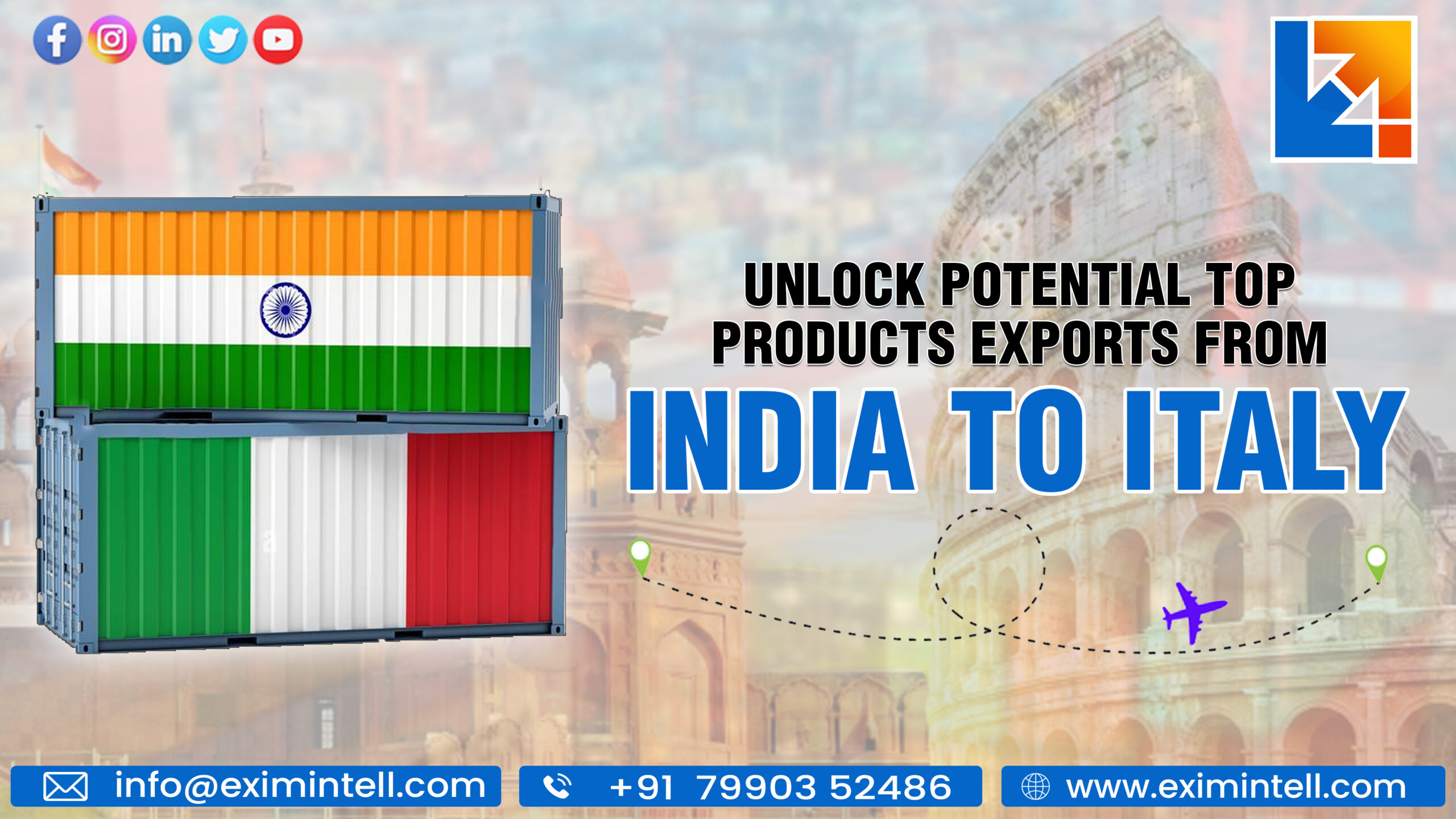The world of international trade is vast, but few relationships are as significant in South Asia as that encapsulated by the phrase “Exporting Goods From India to Bangladesh.” Bridging two nations with rich cultural ties and a shared history, this trading nexus represents a dance of economics, diplomacy, and strategy. As India emerges as a global manufacturing and supply hub, Bangladesh stands out as a crucial partner in its regional trade dynamics.
In “The Dynamics of Exporting Goods From India to Bangladesh,” we’ll explore the deep-rooted factors that drive this relationship, the challenges faced, and the potential that the future holds. Strap in as we navigate the fascinating journey of goods, services, and ideas across these two neighboring nations.
The Importance of “Exporting Goods From India to Bangladesh” in South Asia’s Trade Ecosystem
South Asia, with its burgeoning economies and intertwined histories, has always been a melting pot of trade and commerce. Central to this commerce hub is the dynamic of “Exporting Goods From India to Bangladesh.” India, as the larger neighbor, has often played a pivotal role in shaping the trade narrative of this region. The significance of exporting goods from India to Bangladesh is not merely confined to numbers or trade volume; it’s about the interconnectedness of economies, cultures, and mutual development agendas
This trade bond strengthens diplomatic ties, creates employment opportunities, fosters technological and knowledge exchange, and drives economic growth for both nations. In a rapidly globalizing world, the symbiotic trade relationship between these two countries stands as a testament to regional cooperation and shared progress.
A Brief Overview of the Historical Trade Relationship Between India and Bangladesh
The roots of the trade relationship between India and Bangladesh can be traced back to ancient times when the Indian subcontinent was a unified entity. With the partition in 1947 and the eventual birth of Bangladesh in 1971, the two nations embarked on individual paths, but trade remained a constant bridge. Over the decades, while political scenarios have evolved, the essence of trade has not only endured but flourished.

From jute and textiles in the early days to the contemporary exports of technology, machinery, and pharmaceuticals, the tapestry of trade has become richer and more diversified. Numerous trade agreements, both bilateral and multilateral, have been inked to facilitate smoother trade operations and eliminate barriers. These historical ties set the foundation for the modern trade ecosystem, emphasizing the continuous significance of exporting goods from India to Bangladesh.
The Volume and Value of Goods Being Exported from India to Bangladesh
The bilateral trade relationship between India and Bangladesh has witnessed a remarkable upswing in recent years, a fact evident in the increasing volume and value of goods being exported from India to Bangladesh. According to data from India’s Department of Commerce, the trade balance has consistently been in India’s favor, and the export figures have been on a steady rise.
Government schemes like the Merchandise Exports from India Scheme (MEIS) have played a pivotal role in incentivizing exporters, leading to a boost in trade numbers. Additionally, the Duty-Free Tariff Preference (DFTP) scheme extended by India has allowed Bangladesh to enjoy duty-free access to the Indian market, further augmenting the flow of goods.
Key Sectors and Products That Dominate the Export Landscape
Several sectors stand out when examining the products and commodities that dominate the export landscape from India to Bangladesh. Pharmaceuticals lead the way, with India being a significant supplier of essential medicines to its eastern neighbor.
The Indian government’s ‘Pharma Vision 2020’ aims to make India a global leader in end-to-end drug manufacturing, and this vision has indirectly benefited the export to Bangladesh. Textiles, machinery, and automotive components also contribute significantly to the export portfolio. The Agricultural and Processed Food Products Export Development Authority (APEDA) under the Ministry of Commerce has facilitated the export of agricultural products, making rice, fruits, and spices common exported items.
Furthermore, the establishment of Border Haats, under the aegis of both governments, has encouraged local trade and strengthened ties at the grassroots level, showcasing the diversity and depth of products being exchanged in this thriving trade corridor.
Highlighting Bilateral Trade Agreements That Have Enhanced “Exporting Goods From India to Bangladesh”
The trajectory of exporting goods from India to Bangladesh has been significantly influenced by a series of bilateral trade agreements. The cornerstone of this bilateral trade relationship is the India-Bangladesh Trade Agreement, renewed periodically, which allows both nations to grant each other Most Favored Nation (MFN) status, thereby ensuring reduced tariffs and enhanced trade access. Under this umbrella, the Duty-Free Tariff Preference (DFTP) scheme has been a game-changer.
Introduced by the Indian government, the DFTP grants duty-free access to Bangladeshi products, facilitating an increase in exports from Bangladesh to India. Conversely, the Merchandise Exports from India Scheme (MEIS) has incentivized Indian exporters by rewarding them with duty credit scrips, further promoting the export of goods to Bangladesh.
Government Initiatives and Schemes Promoting Cross-Border Trade
Several government initiatives have streamlined and amplified the process of exporting goods from India to Bangladesh. The Integrated Check Posts (ICPs), established at key entry and exit points on the border, play a pivotal role in simplifying customs procedures, reducing trade transit time, and enhancing security.
The establishment of Border Haats – local markets that operate across the India-Bangladesh border – under a joint initiative by both governments, aims to revive traditional trading links among border communities. Furthermore, the Indian government’s Udyog Aadhaar initiative, a registration scheme for micro, small, and medium enterprises (MSMEs), has spurred many small-scale producers to enter the export market, including to Bangladesh.
Challenges in Exporting Goods From India to Bangladesh
Despite the robust framework and incentives in place, there are palpable challenges in exporting goods from India to Bangladesh. Infrastructure bottlenecks, especially at land customs stations, occasionally lead to delays. While the bilateral trade agreement exists, non-tariff barriers, such as product standards and customs procedures, can be cumbersome.
The lack of harmonization in standards between the Bureau of Indian Standards (BIS) and the Bangladesh Standards and Testing Institution (BSTI) is a point of contention. Moreover, the limited banking channels and the absence of a transaction-friendly environment in the border areas sometimes hinder smooth financial transactions. Addressing these challenges remains pivotal for the future growth trajectory of exports from India to Bangladesh.
Identifying Potential Barriers in Exporting Goods From India to Bangladesh
In the realm of exporting goods from India to Bangladesh, several potential barriers come to the fore, impacting the fluidity of cross-border trade. Tariffs, despite multiple agreements, occasionally present challenges, especially for specific sectors that fall outside preferential treatment. Infrastructural bottlenecks, particularly at major land ports and customs check-posts, can lead to delays in shipments, affecting perishable goods the most.
Additionally, the railway and roadway connectivity, crucial for the swift movement of goods, sometimes falls short of the growing trade demands. Regulatory differences, too, play a significant role. Exporters often find themselves navigating a maze of paperwork, differing standards, and certification requirements. Moreover, cultural differences in business practices, communication, and negotiation styles can pose subtle challenges, requiring Indian exporters to be well-versed with the Bangladeshi business ethos.
Opportunities & Growth Areas in Exporting Goods From India to Bangladesh
Despite the challenges, the landscape of exporting goods from India to Bangladesh is rife with opportunities. The continuous bilateral efforts to reduce trade barriers have opened up newer sectors for collaboration. Growth areas include IT services, pharmaceuticals, automotive parts, and agricultural produce, among others. The emphasis on joint infrastructural projects, like the proposed coastal shipping agreement and improved rail connectivity, holds the promise of unlocking further trade potential.
Moreover, as Bangladesh’s economy continues to grow, there’s an increasing demand for higher-quality goods and services, which Indian businesses can cater to. Thus, while challenges persist, the opportunities in exporting goods from India to Bangladesh remain vast and promising.
Technological Advancements Redefining Exports from India to Bangladesh
Technology is indisputably shaping the future of trade. When it comes to exporting goods from India to Bangladesh, advancements like blockchain can redefine transaction transparency, ensuring that every step of the trade process is traceable and verifiable.
AI-driven predictive analytics can assist businesses in both countries to forecast demand more accurately, ensuring timely supply without overstocking. Moreover, the integration of IoT in logistics can streamline the shipment of goods, providing real-time data on cargo movement, ensuring timely and efficient deliveries.
Case Studies Highlighting the Export Landscape
Several businesses have successfully tapped into the potential of exporting goods from India to Bangladesh, leveraging both traditional sectors and new-age opportunities. One notable example is an Indian IT firm that customized software solutions for Bangladesh’s burgeoning fintech sector.
Another instance involves an Indian renewable energy company that collaborated with Bangladeshi firms to set up solar power projects, addressing the local energy demands while promoting green energy. These cases underline the vast potential and symbiotic relationship inherent in the trade dynamics between the two nations.
Real-world Success Stories in Exporting Goods from India to Bangladesh
Over the years, numerous Indian businesses have successfully forayed into the Bangladeshi market, reflecting the strength and potential of exporting goods from India to Bangladesh. A prominent example is the pharmaceutical sector. Indian pharma companies have made significant inroads into Bangladesh, catering to its increasing healthcare demands with quality medicines.
These firms didn’t just offer products; they understood the local healthcare landscape, adapted their formulations to local needs, and even invested in awareness campaigns. The strategy employed here was not merely transactional but one of partnership and mutual growth. Another instance is the surge of Indian textile machinery in Bangladesh.
With the country’s textile industry witnessing exponential growth, the demand for machinery and technology spiked. Indian manufacturers stepped in, providing state-of-the-art machinery, training, and after-sales service, ensuring Bangladesh’s textile units operated at optimum efficiency.
The Significance of Consultancy in Enhancing Exports
As the dynamics of international trade become increasingly complex, consultancy firms like Exim Intell have emerged as crucial allies for businesses. When it comes to exporting goods from India to Bangladesh, these firms provide a plethora of services, ranging from market insights and regulatory compliance to identifying potential partners and mitigating risks.
Their expertise ensures that businesses aren’t just exporting products, but solutions tailored to the needs of the Bangladeshi market. Additionally, with a deep understanding of both Indian and Bangladeshi trade landscapes, Exim Intell and similar consultancies provide strategic guidance, helping firms navigate challenges, leverage opportunities, and establish a solid footprint in the target market.
Conclusion
The journey of exporting goods from India to Bangladesh has been one marked by growth, collaboration, and mutual respect. As both nations continue to develop and evolve, this relationship is poised to strengthen further.
With technology playing a pivotal role, the future might see even more streamlined trade processes, reduced barriers, and enhanced partnerships. It’s an exciting era for businesses in both countries, and as they look ahead, the shared vision is one of progress, prosperity, and continued collaboration.




















